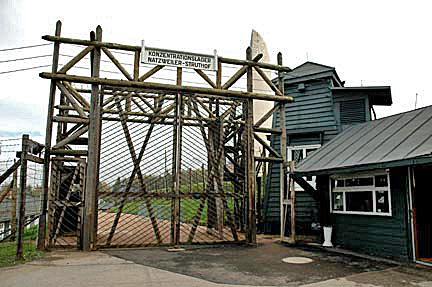|
 |
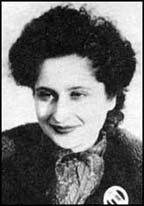 |
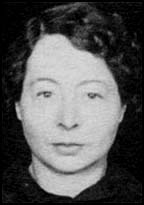 |
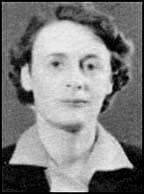 |
In her recently published book entitled "A Life in Secrets," the author Sarah Helm gives details about the four women, which she obtained from the private papers of Vera Atkins, an officer in the British SOE. The SOE was a secret organization which carried on espionage and sabotage in German-occupied Europe during World War II. After the war, Vera Atkins did an extensive investigation, on her own authority, to find the female SOE agents who were missing and presumed dead.
Altogether, there were 39 female SOE agents who were sent to France and 13 of them never returned. One of them had died a natural death soon after her arrival and the other 12 had been captured in France by the German Gestapo and had never returned. After the war, the SOE was disbanded, but Vera Atkins took it upon herself to do an independent investigation to determine the fate of the agents who were missing, including the women agents pictured above. She interviewed surviving SOE agents, Gestapo agents and concentration camp staff members who had been captured by the Allies, including Rudolf Hoess, the infamous Commandant of Auschwitz. Among those that she interviewed were Albert Guérisse and Brian Stonehouse, another British SOE agent who was a prisoner at Natzweiler. Based on information that she got from them, she interrogated staff members from the Natzweiler camp, starting with Franz Berg.
Atkins selected Berg as the first person to be interrogated because he had previously told American investigators about some "elegant" women in the French resistance group known as the Alliance Réseau, who were brought to Natzweiler to be executed, after they were captured near the camp. Berg was a common criminal who was a prisoner in the camp; he was a KAPO in charge of stoking the fire in the crematory oven at Natzweiler. He was the first person to tell Vera Atkins that women had been brought to Natzweiler to be executed and then burned in the one oven in the crematorium.
Brian Stonehouse told Vera Atkins that he had gotten a good look at the women when they walked into the camp, past where he was working just inside the fence on the east side. His account differed from that of Guérisse who said that the women entered the camp in a car driven by the Commandant. Stonehouse could not remember the date of the arrival of the women, but he recalled that it was near the time of the attempted assassination of Adolf Hitler, which had occurred on July 20, 1944. The women in the Alliance Réseau were brought to Natzweiler in August 1944.
The following quote about the arrival of the well dressed women at Natzweiler is from Sarah Helm's book:
Everyone who had noticed the girls pass by saw something slightly different. Some said there were three, and some said four. Some said they passed at three p.m. and some at five p.m. Some said one carried a rug, others that one had a coat. One said they were all carrying boxes, another that they were suitcases. Some said June, some July. But every single witness, like Berg and Stonehouse before them, said that the women were well dressed.
The Natzweiler camp was laid out like a theater with rows of barracks on a terraced slope, bisected by the main camp street, with the camp prison and crematorium building in plain sight on flat ground at the bottom of the hill. As the women walked down through the camp, escorted by SS officers, every prisoner in the camp had the opportunity to witness their arrival for their secret execution which would take place that night.

The photo above shows the Natzweiler camp as it looks today. The white blocks are inscribed with the names of other Nazi concentration camps. The barracks have long since been torn down. When the camp was in operation, there were 15 barracks buildings in three rows of five on terraces cut into the side of a hill.
Brian Stonehouse, who was a talented artist with an interest in fashion, took note of the hair style and clothing of each of the women, as they walked into the camp. All of the women were dressed in civilian clothes and he was later able to describe their outfits and their hair in great detail. From a set of photographs that he was shown, he identified one of the women that he had seen as Diana Rowden, and another as possibly Noor Inayat Khan or Yolande Beekman.
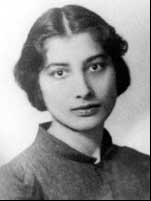 |
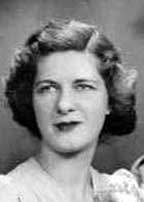 |
Noor Inayat Khan was a radio operator for the Cinema sub circuit of the Prosper line, organized by Emile Garry; she was captured on or around October 1, 1943. Yolande Beekman was a wireless operator for the Musician Network; she was captured by the Gestapo on January 13, 1944. It was not until 1947 that Vera Atkins came to the conclusion that Yolande Beekman and Noor Inayat Kahn had been executed at Dachau.
Guérisse testified before a British Military Court, at the trial of Dr. Werner Röhde and 8 others, that he had recognized 24-year-old Andrée Borrel, one of the SOE agents who had previously worked with him in helping downed Allied pilots to escape through the PAT line, which he had organized.
Franz Berg, one of the main witnesses at the trial, was a German criminal with a long rap sheet that included 22 crimes. A group photograph, taken in the courtroom when Berg was prosecuted by a British Military Court, shows him to be more than a foot shorter than the rest of the accused men. The first time that he was interrogated by Vera Atkins, Franz Berg said that he had, at first, thought when he saw the women walking down the Lagerstrasse, that it was a party inspecting the camp. He said that the women were carrying suitcases and coats over their arms, and he thought that one woman had a traveling rug.
In a deposition that Berg gave to Vera Atkins before the trial, he stated that four women had been killed by injection at Natzweiler and burned in the oven which he had fired up. He identified two of the women in photographs shown to him as Vera Leigh and Noor Inayat Khan.
The SOE was the Special Operations Executive, a British spy organization, which was established by Winston Churchill and given the mission to "set Europe ablaze." The SOE carried on espionage and sabotage operations during World War II, as well as operating escape lines to send downed fliers through Spain and back to England. The SOE was organized into sections and each section was broken down into networks. The four women who were executed at Natzweiler were all in the F section which operated in France, helping the French resistance.
Andrée Borrel was a courier working with the Physician Network, better known as the Prosper Network because it was headed by Francis Suttill whose code name was Prosper. Vera Leigh was a courier for the Inventor circuit which worked with the Prosper Network. Diane Rowden was working with the Acrobat circuit of the Prosper line. Sonia Olschanezky, who was Jewish, had been recruited in France to work as a courier for the Prosper Network.
Andrée Borrel was captured on June 23, 1943; Vera Leigh was captured on October 30, 1943; Diane Rowden was captured on November 18, 1943, and Sonia Olschanezky was captured on January 21, 1944.
On May 29, 1946, Dr. Werner Röhde and 8 others at Natzweiler were brought before a British Military Court in Wuppertal, Germany. According to Rita Kramer, who wrote a book entitled "Flames in the Field" about the four women who were executed at Natzweiler, "The evidence for the prosecution had been gathered by Squadron Officer Vera Atkins and Major Bill Barkworth of the SAS War Crimes investigation team, well after the organizations to which they and the missing men and women had belonged had officially ceased to exist. It was a kind of personal vendetta of principle."
Guérisse and Stonehouse had both been transferred from the infamous Mauthausen camp in Austria to the Natzweiler camp in the Summer of 1944, just a few weeks before the women were allegedly executed. Guérisse was a medical doctor who worked in the Natzweiler camp infirmary; he testified that he had seen the four women SOE agents being escorted, after dark, by the camp doctor to the crematorium. Then he saw flames shoot out of the crematorium chimney four times. He learned later, from Franz Berg, that this meant that the oven door had been opened and then closed four times as the four women were cremated. Franz Berg said in his deposition, given to Vera Atkins, that all four of the women were cremated at one time in the one oven in the crematorium.
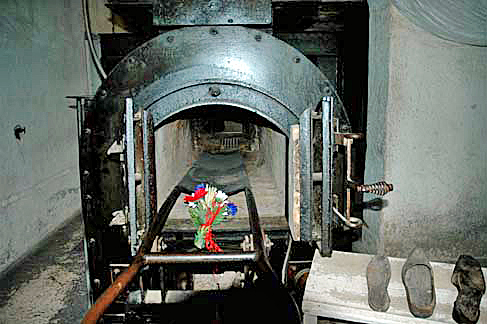
Brian Stonehouse had observed that one of the women was carrying a ratty fur coat, and a few days later, he saw an SS man nicknamed Fernandel "walking up the steps in the middle of the camp, carrying a fur coat." Fernandel was a French comic actor whom this SS man resembled.
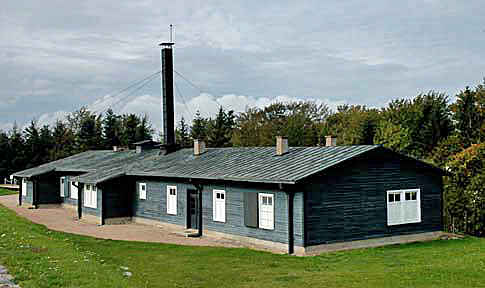
In September 1944, as Allied troops approached the Natzweiler area after the invasion at Normandy, the concentration camp was abandoned and the prisoners were evacuated to Dachau. Natzweiler was the first major concentration camp to be found by the Allies; it was first discovered by French troops in November 1944.
According to Rita Kramer, who wrote "Flames in the Field," a three-man intelligence-gathering team was sent by the Political Warfare Department of Supreme Headquarters Allied Expeditionary Forces (SHAEF) to Natzweiler in early December 1944.
The following quote is from the book "Flames in the Field" written by Rita Kramer:
One of the team was a twenty-one-year-old British officer, son of a White Russian nobleman and an English mother, named Yurka Galitzine, who made a number of discoveries. He found all of the camp records intact in the administration building; he heard that there had been some British men in the camp and that some women described as well-dressed spies had been brought there, and he carefully put together a record of the systematic shootings, hangings and gassings, the medical experiments carried out on live prisoners, the conditions of slave labor on starvation rations, the brutal punishments randomly inflicted by sadistic criminals put in charge of the barracks, and other details of daily life in the camps that had been intended to pave the way for the New Order promised by the Third Reich. No one would believe him.
Galitzine had "heard" about the atrocities in the camp from four escaped prisoners who gave him a tour of the abandoned camp.
New York Times reporter Milton Bracker also toured Natzweiler in early December in the company of a guide from the Free French Forces of the Resistance. The guide pointed out all the features of the camp, such as the whipping block, the gas chamber and the S-shaped meat hooks where prisoners were hung from the ceiling. Bracker wrote an article that was published in the New York Times on December 5, 1944. The article did not mention the British spies who were executed at Natzweiler.
A book about the Natzweiler camp, written in 1955 and updated in 1964, mentions the execution of two women members of the Alliance Réseau in late August 1944. The Alliance women, described as "elegant," were brought to the Natzweiler camp and killed by injection the same day. However, the book does not mention the execution of the four women SOE agents on July 6, 1944. Entitled "Concentration Camp Natzweiler Struthof," the book was written by members of the National Committee for the Erecting and the Preservation of a Memorial for Deportation at the Struthof. The authors of this book, which is available only from the Natzweiler Memorial Site, were former French prisoners at the camp who had apparently missed the dramatic arrival of the British SOE agents.
Could these "elegant" women, who were members of a French resistance group, have been the same women who were described by a former prisoner to Galitzine as "well-dressed spies?"
In his book "Inside the Vicious Heart," author Robert Abzug wrote the following:
On December 9, 1944, five days after Bracker had made his tour, Colonel Paul Kirk and Lt. Colonel Edward J. Gully of the American Sixth Army Group inspected Natzwiller. It is impossible to know what they had heard or believed about Nazi atrocities; it is clear that they approached their job with caution. In the report they made to headquarters, which was eventually forwarded to the war crimes division, they qualified just about every observation that had to do with instruments of death and torture. [...] They duly recorded the testimony of French informants and reported their findings. [...] They believed enough to send along their report to war crimes investigators, but retained a measure of disbelief.
The report by Col. Kirk and Lt. Col. Gully did not mention the execution of four British SOE agents at Natzweiler.
Rita Kramer wrote:
In Galitzine's report, ignored and effectively suppressed by SHAEF headquarters, it was noted that one of the English prisoners had left behind some drawings he had made while in Natzweiler. He had given them to one of the civilian foremen employed by a local firm of stonemasons that had contracted with the Germans to supervise the prisoners who slaved in the quarry. The drawings were signed "B.J. Stonehouse".
The Natzweiler camp had been built in 1941 as a labor camp to quarry the red granite in the region for construction of new buildings in Nürnberg, one of Hitler's favorite cities. The original inmates were German criminals who had been condemned to hard labor. In 1943, the camp was used to imprison captured Resistance fighters from France, Belgium and the Netherlands. These prisoners worked in munitions factories that were built at Natzweiler.
By the Summer of 1944, when Brian Stonehouse and Albert Guérisse were transferred to Natzweiler, Hitler's building projects had been put on hold and the quarry was no longer being worked. Sarah Helm does not mention anything in her book "A Life in Secrets" about a sketch of the British SOE women done by Brian Stonehouse while he was in the camp.
According to Rita Kramer, who interviewed Vera Atkins for her book, Atkins was aware of Galitzine's report about Natzweiler. She showed Galitzine the names of the missing women SOE agents, but he didn't recognize any of the names; they were not in the records that he had found at Natzweiler. However, Galitzine told Atkins about the Karlsruhe prison where the records showed that 3 English women had been imprisoned for several months before being sent to an unnamed concentration camp on July 6, 1944.
The following is a quote from page 209 of Sarah Helm's book entitled "A Life in Secrets":
Galitzine had heard of at least two British men who had been imprisoned at Natzweiler, one of whom, rumour had it, had drawn sketches of inmates. The sketches were signed "J.B. Stonehouse." Galitzine had no idea who J.B. Stonehouse was, but Vera certainly did. Her own agent Brian Stonehouse had been in Natzweiler and in civilian life had been a graphic artist for Vogue. But Stonehouse had certainly never spoken about women arriving at the camp. Perhaps he had suppressed the entire episode.
Vera now wrote to Stonehouse, asking him to think back to Natzweiler and enclosing photographs of her missing girls to jog his memory.
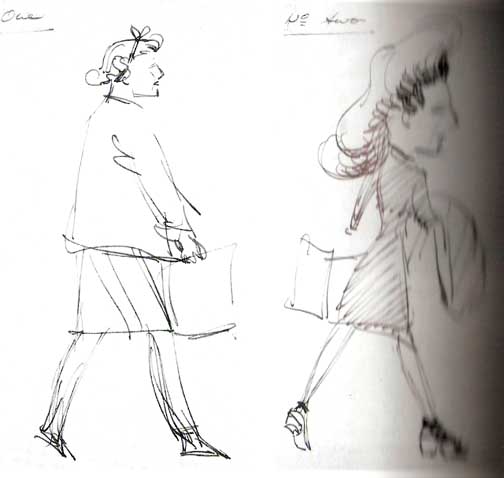
In her biography of Vera Atkins, Sarah Helm included two sketches done by Brian Stonehouse; he had sent them to Atkins after receiving her letter containing the photographs. One of the sketches, labeled No. 1, showed a woman wearing a ribbon in her hair and carrying a suitcase.
Stonehouse wrote the following description of No. 1, which is quoted in Sarah Helm's biography:
No. 1 was middle height, a little older I should say than I was then (25) with short blonde mousy hair tied with what I took to be a piece of Scottish tartan silk ribbon, wearing a light grey flannel suit - the coat a shortish swagger model - obviously English, as was her face with a good humoured, kindly expression and a defiant look, which included that pathetic piece of gay silk in her hair - she had obviously been in jail quite a while - as she had no lipstick - and her face was rather pale.
From this description, Vera Atkins immediately recognized Diana Rowden, the most English looking of all the agents, who always wore a bow in her hair. Atkins had sent Stonehouse a photograph of Diana in uniform so he knew what she looked like before he did the sketch.
When Stonehouse and Guérisse returned to London after Dachau was liberated, Vera Atkins had been there to meet them and welcome them home, but neither of them had mentioned anything about the SOE women they had seen in Natzweiler, even though they must have known that Atkins was worried about her missing agents.
Stonehouse's drawing, labeled No. 2, showed a woman whose head was way out of proportion to the rest of her body. His description of No. 2, as quoted in "A Life in Secrets," is as follows:
She was I believe perhaps a little younger than No. 1 - smaller - with dyed blonde hair... only it had not been retouched for a long time as there were several inches of hair from the roots of the hair line which were dark.
She wore wooden soled shoes, a black coat, carried a fur coat of not very good fur - some sort of dyed rabbit - rather chocolat au lait.
No. 2 was obviously continental - maybe Jewish.
According to Sarah Helm's book "A Life in Secrets," Noor had "an eastern, possibly Jewish, look." She had left for France on the same night as Diana Rowden.
Stonehouse's descriptions were written nine months after he had returned from Dachau and 18 months after he had witnessed the women arriving at Natzweiler. At the time that he answered Vera Atkins' letter, he was working for the Allied Control Commission, the organization that had been set up to govern the defeated Germans. His job was to interrogate potential German war criminals and former concentration camp inmates for information to be used in war crimes trials. He himself had witnessed victims of a war crime at Natzweiler, but he didn't bother to tell anyone until Vera Atkins contacted him for information about the missing women.
In his reply to Atkins, Stonehouse said that his sketch of No. 1 matched the photograph of Diana Rowden, but he could not match any of the photographs to No. 2. He thought that Yolande Beekman and Noor Inayat Khan were two possible matches. Vera Atkins could see no resemblance to Noor in the sketch; she assumed that the woman in the No. 2 sketch was Yolande Beekman.
The pieces of the puzzle now began to fit together. Some "well-dressed" women had been seen in the Natzweiler camp around the same time that a convoy of English women left Karlsruhe bound for an unnamed concentration camp, and the woman in a drawing, done by a prisoner who was a British SOE agent at Natzweiler, looked English. This was enough circumstantial evidence to warrant a British Military Court proceeding for nine members of the Natzweiler staff.
The Karlsruhe prison records showed that Sonia Olschanezky had been taken to an unnamed concentration camp on July 6, 1944, the same date that three other women left Karlsruhe for an unknown destination. Vera Atkins didn't recognize the name Sonia Olschenesky because she had been recruited in France to work with the British SOE, not sent over from England. Atkins assumed that Noor Inayat Khan, also known as Nora Baker, had taken this name as a new alias. It was not until 1947 that Vera Atkins learned that Sonia Olschanezky was a real person. Atkins then assumed that Olschanezky had been murdered at Natzweiler, not Noor Inayat Khan, but this new assumption was not publicly known until 1956 when it was revealed by an investigative reporter.
The identification of the Natzweiler victims at the trial had been based purely on speculation by eye witnesses, as there were no records whatsoever pertaining to the fate of the women. The trial transcript was altered in 1947 to show that one of the victims was "unidentified" at the time of the trial. The family and fiancé of Sonia Olschanezky were never told what had happened to her.
Sir Hartley Shawcross was the British prosecutor at the Nuremberg International Military Tribunal in November 1945 where the top Nazis were charged with participating in a "common plan" to commit war crimes. Shawcross also attended the British Military Court proceedings against the nine men charged with killing Vera Leigh, Diana Rowden, Andrée Borrel and Noor Inayat Khan at Natzweiler.
The following quote by Shawcross is from the Forward of a book edited by Anthony Webb, entitled "Trial of Wolfgang Zeuss..." published in 1949 by William Hodge & Company Limited, which contains the testimony from the Natzweiler proceedings:
But the mind which is lastingly impressed and shocked by a single crime staggers and reels at the contemplation of mass criminality: becomes almost impervious to horror, conditioned against shock. And as events recede into the past, those who did not themselves experience them begin to question whether these things could indeed have happened and wonder whether the stories about them are really more than the propaganda of enemies.
Was Shawcross questioning whether the execution of the women at Natzweiler had actually happened?
Continue
British SOE agents executed at Dachau
Trial of Werner Röhde and 8 others
French Resistance
Nacht und Nebel prisoners
Albert-Marie Guérisse
General Charles Delestraint
Alliance Réseau
Home
This page was last updated on November 10, 2006
